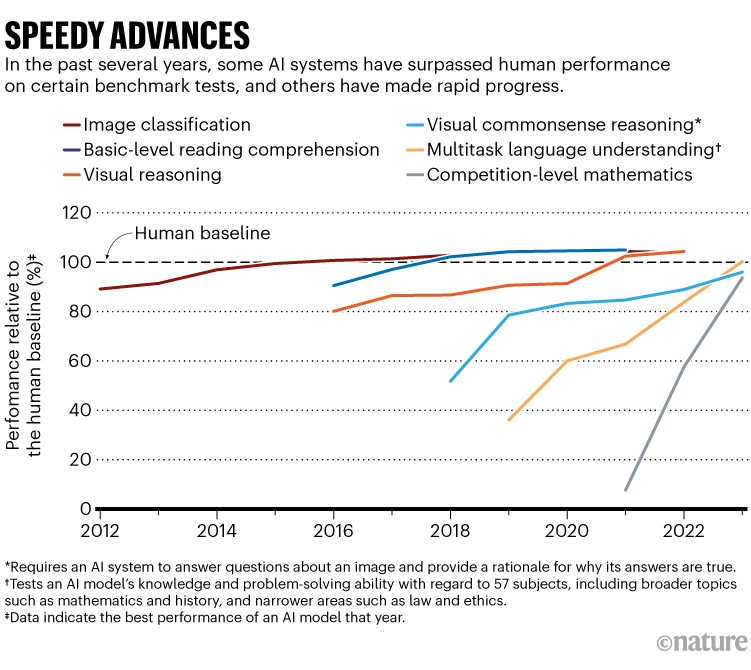The invention/adoption of/ adaptation to agriculture was such a big deal, and the fact that it happened more than once, both tend to imply some very powerful motivating factor.
This paper has been making the rounds this month due to a version published by Oxford University Press on April 19. (gated)
Here is an earlier version hosted at the author's personal website:
The Ant and the Grasshopper:
Seasonality and the Invention of Agriculture
Andrea Matranga∗
Chapman University
October 31, 2022
Abstract
During the Neolithic Revolution, at least seven different human populations independently invented agriculture, without any contact with one another. How is it possible that these rapid advancements in agricultural techniques all occurred in the same, relatively short period of time? In this paper, I argue that rapid agricultural innovation was a response to a large increase in climatic seasonality. In the regions most affected by this process, hunter-gatherers abandoned their traditional nomadism in order to store food and smooth their consumption. As a result of their newfound sedentary lifestyle, it was much easier for hunter-gatherers to invent and adopt agriculture. I present a model that captures the key incentives for the Neolithic Revolution, and I test the resulting predictions against a global panel dataset of climate conditions and Neolithic adoption dates.
I find that invention and adoption were both systematically more likely in places with higher seasonality. The findings of this paper imply that seasonality patterns 10,000 years ago, were one of the major determinants of the order in which different regions adopted agriculture. JEL Codes: O33, O44, N50.
1 Introduction
How and why was agriculture invented?
The long run advantages of abandoning hunter-gathering techniques and adopting agriculture are clear: farming brought about food surpluses that allowed population densities to rise, labor to become increasingly specialized, and cities to be constructed. Despite these seemingly intuitive advantages, we still don’t know what motivated the transition from hunter-gathering to farming in the short run (Gremillion et al., 2014; Smith, 2014).
After 200,000 years of hunting and gathering, agriculture was invented independently at least seven times, on different continents, within a 7,000 year period. Archaeologists agree that at a very minimum, independent inventions of agriculture occurred in the Fertile Crescent, sub-Saharan Africa, North and South China, the Andes, Mexico, and North America.
Interestingly, the first farmers were shorter and had more joint diseases, suggesting that they ate less than hunter gatherers and worked more (Cohen and Armelagos, 1984). The question thus arises: why would seven different human populations decide to adopt remarkably similar technologies, around the same time, if it meant they would work more for less food?
I propose a new theory for the Neolithic Revolution, construct a model capturing its intuition, and test the resulting implications against a panel dataset of climate and adoption. I argue that the invention of agriculture was triggered by a large increase in climatic seasonality, which peaked approximately 12,000 years ago, shortly before the invention of agriculture.
This increase in seasonality was caused by oscillations in the tilt of Earth’s rotational axis, and other orbital parameters that have been well documented by astronomers and geophysicists (Berger, 1992). The harsher winters and drier summers, made it hard for hunter-gatherers to survive during part of the year, and some of the most affected populations responded to these changes by storing wild foods. This in turn forced them to abandon their nomadic lifestyles, since that would have forced them to spend most of the year next to their granaries, either stocking, or drawing from them.
While these newly formed sedentary communities still hunted and gathered wild foods rather than grow crops, sedentarism and storage made it easier for them to eventually adopt farming....
....MUCH MORE (67 page PDF)
From there it was just a hop, skip, and a jump to Piketty and inequality:
This is a repost from January 2, 2017.
Original post:
So there I was, reading the abstract of "
Hazelnut economy of early Holocene hunter–gatherers: a case study from Mesolithic Duvensee, northern Germany", thinking about Nutella and Frangelico when this grabbed my eye:
...High-resolution analyses of the excellently preserved and well-dated
special task camps documented in detail at Duvensee, Northern Germany,
offer an outstanding opportunity for case studies on Mesolithic
subsistence and land use strategies. Quantification of the nut
utilisation demonstrates the great importance of hazelnuts. These
studies revealed very high return rates and allow for absolute
assessments of the development of early Holocene economy. Stockpiling of
the energy rich resource and an increased logistical capacity are
innovations characterising an intensified early Mesolithic land use...
Stockpiling, storage, commodities, well that's right in our wheelhouse
,*
and if I can combine it with the last remnants of interest in Piketty's
approach to inequality.....maybe I can synthesize something halfway
original...
Yeah, it's already been done.
Here's VoxEU, September 2015:
Cereals, appropriability, and hierarchy
The Neolithic Roots of Economic Institutions
Conventional theory suggests that hierarchy and state institutions
emerged due to increased productivity following the Neolithic transition
to farming. This column argues that these social developments were a
result of an increase in the ability of both robbers and the emergent
elite to appropriate crops. Hierarchy and state institutions developed,
therefore, only in regions where appropriable cereal crops had
sufficient productivity advantage over non-appropriable roots and
tubers.
What explains underdevelopment?
One of the most pressing problems of our age is the underdevelopment
of countries in which government malfunction seems endemic. Many of
these countries are located close to the Equator.1 Acemoglu et al.
(2001) point to extractive institutions as the root cause for
underdevelopment. Besley and Persson (2014) emphasise the persistent
effects of low fiscal capacity in underdeveloped countries. On the other
hand, Diamond (1997) argues that it is geographical factors that
explain why some regions of the world remain underdeveloped. In
particular, he argues that the east-west orientation of Eurasia resulted
in greater variety and productivity of cultivable crops, and in larger
economic surplus, which facilitated the development of state
institutions in this major landmass. Less fortunate regions, including
New Guinea and sub-Saharan Africa, were left underdeveloped due to low
land productivity.
In a recent paper (Mayshar et al. 2015), we contend that
fiscal capacity and viable state institutions are conditioned to a major
extent by geography. Thus, like Diamond, we argue that geography
matters a great deal. But in contrast to Diamond, and against
conventional opinion, we contend that it is not high farming productivity and the availability of food surplus that accounts for the economic success of Eurasia.
- We propose an alternative mechanism by which environmental
factors imply the appropriability of crops and thereby the emergence of
complex social institutions.
To understand why surplus is neither necessary nor sufficient
for the emergence of hierarchy, consider a hypothetical community of
farmers who cultivate cassava (a major source of calories in sub-Saharan
Africa, and the main crop cultivated in Nigeria), and assume that the
annual output is well above subsistence. Cassava is a perennial root
that is highly perishable upon harvest. Since this crop rots shortly
after harvest, it isn't stored and it is thus difficult to steal or
confiscate. As a result, the assumed available surplus would not
facilitate the emergence of a non-food producing elite, and may be
expected to lead to a population increase.
Consider now another hypothetical farming community that grows a
cereal grain – such as wheat, rice or maize – yet with an annual produce
that just meets each family's subsistence needs, without any surplus.
Since the grain has to be harvested within a short period and then
stored until the next harvest, a visiting robber or tax collector could
readily confiscate part of the stored produce. Such ongoing confiscation
may be expected to lead to a downward adjustment in population density,
but it will nevertheless facilitate the emergence of non-producing
elite, even though there was no surplus.
Emergence of fiscal capacity and hierarchy and the cultivation of cereals
This simple scenario shows that surplus isn't a precondition for
taxation. It also illustrates our alternative theory that the transition
to agriculture enabled hierarchy to emerge only where the cultivated
crops were vulnerable to appropriation.
- In particular, we contend that the Neolithic emergence of fiscal
capacity and hierarchy was conditioned on the cultivation of
appropriable cereals as the staple crops, in contrast to less
appropriable staples such as roots and tubers.
According to this theory, complex hierarchy did not emerge among
hunter-gatherers because hunter-gatherers essentially live from
hand-to-mouth, with little that can be expropriated from them to feed a
would-be elite.2
- Thus, rather than surplus facilitating the emergence of the
elite, we argue that the elite only emerged when and where it was
possible to expropriate crops....
...MORE
*See, for example:
The Golden Age of Commodities Market Manipulation: Corners, Storage and Squeezes
These days however, to purloin that wealth, you don't even need to be dealing with storables:
How to Manipulate Non-storable Commodities Markets
On the other hand, storing electricity is pretty much the ultimate dream of venture capitalists:
And:
"Intergenerational wealth and inequality in the animal world" (plus human elites and theft)
And:
Following Up On "Commodity traders superior to chimpanzees": The Importance of Pockets We left Thursday's "Commodity traders superior to chimpanzees, research shows" with the observation that any advantage commodity traders had over their simian cousins could probably be ascribed to pockets or other forms of storage...And:
Storage: Very Important To Roman Emperors and Commodities Market Manipulators
And:
Intensification of agriculture and social hierarchies evolve together, study finds
And:
Mechanization, Productivity and Inequality: It Was Ever Thus
Ox-drawn plows to blame for increased inequality in Eurasia beginning in 4,000 BC
And:
Thieving Elites And Complex Societies and What's With Larry Fink And All The Other Bald Guys?
And finally:
Fairness, Capuchin Monkeys and Wall Street This is a few years old but contains some good lessons so is probably worth reposting
The speaker, Frans de Waal, is one of the heavyweights of the primate
world. Actually, we all are among the heavyweights of the primate world
but he's up there with Jane Goodall in the study of primates.



